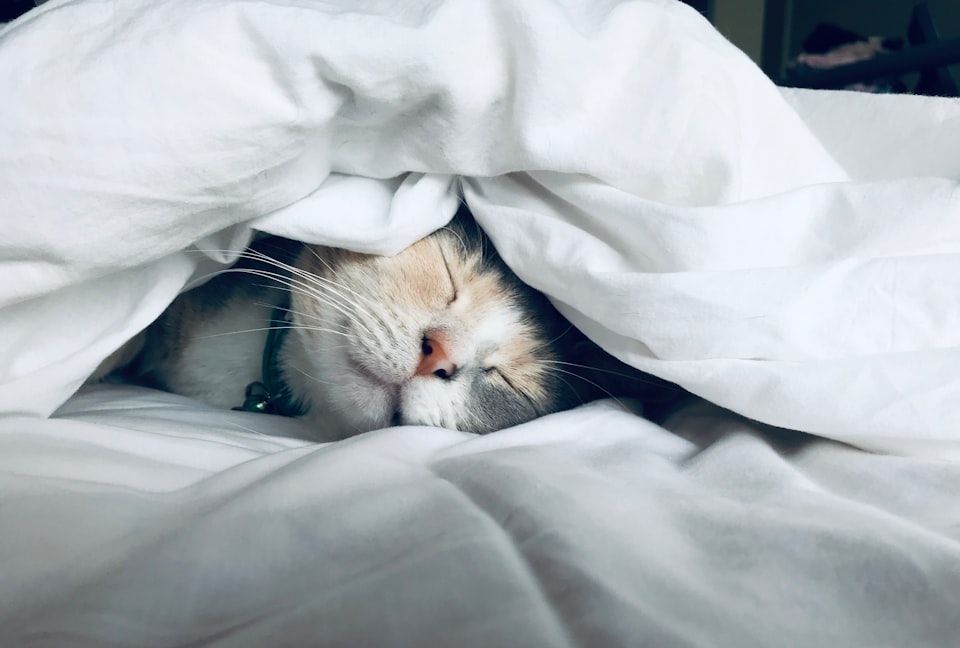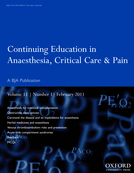Obstructive Sleep Apnoea

Take home messages:
- Obstructive Sleep Apnoea (OSA) is common, and commonly undiagnosed
- The STOP-BANG score is a useful clinical scoring system to detect OSA
- A score of 5 or more suggests moderate to severe OSA
Sleep is important.
But you knew that already.
We know sleep is important for allowing the brain to consolidate new knowledge, clear out the day's waste metabolites and prune synapses, but beyond that, there's a lot of guesswork involved as to why we spend nearly a third of our lives unconscious.
There are many things that can go wrong with sleep, and here we're focusing on obstructive sleep apnoea, a condition in which collapse of the oropharyngeal airway causes obstruction to air flow, and periods of hypopnoea or apnoea during sleep.
The mildest form is simple snoring, where the soft tissues of the palate and pharynx vibrate during inspiration. It is a condition to which many are prone, particularly when supine (pun intended) or after consuming alcohol or too much Christmas dinner.
If severe, this can cause complete obstruction to air flow, leading to apnoeas, defined as lasting more than 10 seconds.
Understandably, regularly dropping your oxygen saturations and retaining CO2 as a result of not breathing while you're trying to kip is not conducive to restful sleep, and so patients with OSA are classically very tired during the day and prone to depression and a whole host of other risks as a consequence of their disordered breathing.
It is estimated that at least 5-10% of the population suffer from some degree of obstructive sleep apnoea, and this percentage is thought to double in patients requiring surgical procedures.
STOP BANG
This is the scoring system frequently used to determine the likelihood of OSA.
STOP BANG
- Snoring
- Tired during the day
- Observed to have apnoeic episodes
- Pressure (hypertension)
- BMI >35
- Age >50
- Neck Circumference >40cm
- Gender (male)
These are all yes/no answers scoring one point each. A score of 5 or more suggests moderate to severe sleep apnoea is highly likely.
How can we treat it?
The main tactic is to address the modifiable risk factors that predispose people to snoring and sleep apnoea, including:
- Weight loss
- Smoking cessation
- Abstaining from alcohol
- Exercise
The other main intervention is the use of CPAP, to maintain a patent airway and reduce the incidence of apnoeas.
Revising for the Final FRCA?
For this post, we will run through a sample Constructed Response Question kindly donated by Sumner et al. from their fantastic book, which we would highly recommend you grab a copy of as it provides just the right level of detail for a wide spectrum of topics commonly examined on the FRCA Final paper.
CRQs and SBAs for the Final FRCA: questions and detailed answers - Sumner, Allen, Feneley and Raithatha
CRQ Vignette
A 47 year old man is listed for a sub-acromial decompression and shoulder arthroscopy. He is 156cm tall and weighs 128kg. He has concurrent hypertnesion, type II diabetes mellitus and familial hypercholesterolaemia. He is allergic to penicillin and currently takes ramipril, metformin and atorvastatin. He is an ex-smoker, and consumes 14 units of alcohol per week. He describes his exercise tolerance as unrestricted and works as a warehouse supervisor. He has been researching online about his tiredness and thinks he may be suffering from obstructive sleep apnoea (OSA)
List six predisposing factors for OSA
Patient factors
- Obesity
- Age 40-70
- Male gender
- Neck circumference >40cm
- Pregnancy
- Craniofacial abnormalities
- Neuromuscular disease
- Tonsillar/adenoidal hypertrophy
Lifestyle factors
- Smoking
- Alcohol intake
- Sedentary lifestyle
- Unemployment
What is the pathophysiology of OSA?
- Loss of muscle tone in oropharyngeal soft tissue leads to upper airway collapse and obstruction
- Negative pressure during inspiration causes oropharyngeal collapse
- Increased fatty tissue causes narrowing of oropharynx
List two methods used in the diagnosis of OSA
- Sleep polysomnography
- STOP BANG questionnaire
- Oxygen desaturation index
- High clinical suspicion
'Sleep studies' is not accepted for a mark on its own, it needs to say 'polysomnography'
What Apnoea-Hypopnoea Index or AHI score corresponds to each level of severity of OSA?
- Mild - >5
- Moderate - >15
- Severe - >30
AHI is calculated as (total number of hypopnoeas + total number of apnoeas) divided by total sleep time in hours
An arterial blood gas performed demonstrates a pCO2 of 8.2kPa. You plan to postpone the surgery until the patient has undergone supervised weight loss and is established on continuous positive airway pressure.
List four benefits of long-term CPAP therapy in OSA
- Improved quality of life
- Improved cardiac function
- Improved daytime somnolence
- Reduced plately aggregation
- Reduced cardiovascular events
- Reduced cerebrovascular events
- Reduced pulmonary hypertension
- Reduced depression
List three strategies to avoid enhanced post-operative pharyngeal muscle relaxation related to anaesthetic conduct
- Regional anaesthesia
- Avoid or fully reverse muscle paralysis
- Use short acting sedative agents
- Restart CPAP post-operatively
- Supplementary oxygen post-operatively
This question has been rated as easy with a pass mark of 12. The aim is to be able to diagnose obstructive sleep apnoea, understand the underlying pathophysiology and its peri-operative management.
The pass requirement is to understand strategies to change anaesthetic practice for an OSA patient.
OSA is becoming increasingly common in the general population and it can have significant and life-changing effects in the long term. Importantly, in the perioperative phase, good anaesthetic and post-operative management can reduce complications. The mainstay of treatment of OSA is lifestyle modification, but CPAP can also be used.
Often this should be carried with the patient throughout their surgical journey and should be placed ont he patient post-operatively. Perhaps a contraindication to this would be upper airway surgery and an MDT-style approach with the operating surgeon should be taken to manage these patients.
Society for Obesity and Bariatric Anaesthesia
These guidelines are a must for anyone anaesthetising a bariatric patient - they're brilliantly accessible and up to date.

Useful Tweets
🔐This new meta-analysis finds that diagnosed obstructive sleep apnoea is associated with an almost two-fold increased risk of postoperative complications.
— 𝘈𝘯𝘢𝘦𝘴𝘵𝘩𝘦𝘴𝘪𝘢 (@Anaes_Journal) June 29, 2022
Time for more polysomnography and home sleep apnoea testing?@biancapivetta2 @FrancesChung6
🔗https://t.co/zLpMDBji9T pic.twitter.com/ZMqUU1opez
These patients frequently suffer from obstructive sleep apnoea. A sound understanding of its pathophysiology, investigation, diagnosis and perioperative management is really helpful. Here’s a pair of #OnePagers covering all that!#FOAMed #JanuAIRWAY 3/5 pic.twitter.com/CAGRXaiAso
— Difficult Airway Society (DAS) Trainees (@dastrainees) January 28, 2022
References and Further Reading:



